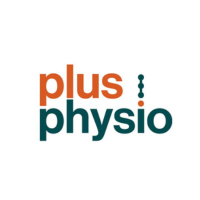Articles
How Digital Tools Improve Patient Engagement in Physiotherapy Clinics

Share article
In today’s fast-evolving healthcare landscape, patient engagement has become more than a buzzword—it’s a strategic priority. For physiotherapy clinics in particular, the level of engagement directly impacts treatment adherence, recovery outcomes, and long-term patient satisfaction. As digital healthcare adoption accelerates in 2025, clinics that leverage modern tools are able to deliver more personalized, efficient, and connected care.
Whether you’re a solo practitioner or managing a multi-location facility, integrating digital solutions—especially modern physiotherapy software—can help you streamline your workflow while engaging patients at every stage of their recovery journey.
The Shift Toward Patient-Centric Digital Care
Over the past few years, digital transformation in physiotherapy has expanded beyond simple exercise videos or appointment reminders. Today’s patients expect seamless communication, remote accessibility, and visibility into their own progress.
Increasingly, clinics are adopting tools such as:
- Mobile-based home exercise programs
- Real-time progress tracking
- Automated appointment and payment reminders
- Telehealth consultations
- AI-powered assessment and documentation tools
- Integrated physiotherapy billing software for smooth financial workflows
These digital systems not only improve operational efficiency but also empower patients to take an active role in their rehabilitation.
1. Personalized Home Exercise Programs (HEPs)
One of the biggest contributors to improved patient engagement is the digitalization of home exercise programs.
Traditional paper-based HEPs often get lost, misunderstood, or ignored. But digital HEPs allow clinics to deliver:
- Clear video instructions
- Customizable exercise plans
- Real-time adjustments
- Progress monitoring through mobile apps
For example, physiotherapists using modern physiotherapy software can send tailored exercise routines directly to a patient’s phone. This ensures consistency, reduces confusion, and significantly improves adherence rates. Patients feel more supported when their recovery plan is interactive and easy to follow.
2. Better Communication & Support Through Digital Channels
Consistent communication is essential for empowering patients and building trust. Digital tools offer seamless engagement through:
- Automated reminders
- Chat support within clinic apps
- Follow-up notifications
- Patient education content
Using communication modules built into physiotherapy software, clinics can send reminders for sessions, share educational resources, and request quick updates about pain levels or exercise completion. This ongoing interaction between visits helps patients stay motivated and reduces the chances of drop-offs.
3. Telehealth and Virtual Consultations
Telehealth has become a game-changer, particularly for patients who:
- Have mobility challenges
- Live in remote locations
- Prefer flexible care options
- Require frequent progress check-ins
By integrating telehealth features within your physiotherapy management and physiotherapy billing software, clinics can offer blended care models that keep patients engaged and connected.
Conclusion
Digital tools are reshaping how physiotherapy clinics interact with patients. By investing in features like online exercise programs, telehealth, automated communication, and integrated billing, clinics create a more connected, patient-centric experience that leads to better outcomes.
Advertisement

